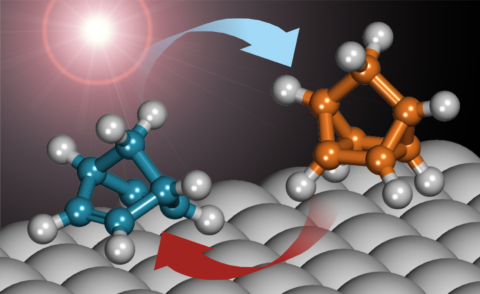Storing solar energy in switchable molecules
To comply with the worldwide increasing demand for renewable energy, new tailor-made concepts are required to capture and store solar energy for different applications and at different scale. Beside the well-established approaches for energy storage, such as batteries or power-to-X, smart molecular concepts may provide simple, small-scale solutions with the potential to complement the portfolio of established technologies for specific applications.
A particular promising concept is the so-called ‘molecular solar thermal system’ (MOST). MOST technology combines solar energy conversion, energy storage, and energy release in a simple molecular approach. The idea is based on molecular photoswitches, which are converted photochemically to a metastable high energy state, and thus store solar energy in a simple one-molecule-one-photon process. The stored energy can later be released on demand in form of heat.
In a current publication, eight leading research groups in the field from six countries provide an insight into the most recent developments in this exciting research field. Read about the scientific concepts behind this stunning concept, on new ideas for the molecular design, and on how to incorporate the concept into functional devices.
Original publication
Z. Wang, P. Erhart, T. Li, Z.-Y. Thang, D. Sampedro, Z. Hu, H. A. Wegner, O. Brummel, J. Libuda, M. B. Nielsen and K. Moth-Poulsen, Storing energy with molecular photoisomers Joule, 2021, DOI: https://doi.org/10.1016/j.joule.2021.11.001.
Contact
Dr. Olaf Brummel
- Phone number: +49 9131 85-67663
- Email: olaf.brummel@fau.de
Prof. Dr. Jörg Libuda
- Phone number: +49 9131 85-67661
- Email: joerg.libuda@fau.de

